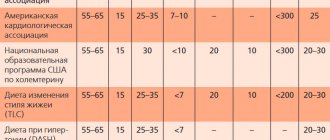Zinnat granules for the preparation of suspension for oral administration 125 mg/5 ml bottle 50 ml in Moscow
Pharmacological action: Cefuroxime axetil is a precursor to cefuroxime, which is a second generation cephalosporin antibiotic. Cefuroxime is active against a wide range of pathogens, including strains that produce β-lactamases.
Cefuroxime is resistant to bacterial β-lactamases and is therefore effective against ampicillin-resistant or amoxicillin-resistant strains.
The bactericidal effect of cefuroxime is associated with the suppression of bacterial cell wall synthesis as a result of binding to the main target proteins.
Cefuroxime is generally active in vitro against the following microorganisms.
Gram-negative aerobes: Haemophilus influenzae (including ampicillin-resistant strains), Haemophilus parainfluenzae, Moraxella (Branhamella) catarrhalis, Neisseria gonorrhoeae (including strains that produce and do not produce penicillinase); Escherichia coli, Klebsiella spp., Proteus mirabilis, Providencia spp.
Gram-positive aerobes: Staphylococcus aureus (including penicillinase-producing strains, but excluding methicillin-resistant strains), Staphylococcus epidermidis (including penicillinase-producing strains, but excluding methicillin-resistant strains), Streptococcus pyogenes (and other beta-hemolytic streptococci), Streptococcus pneumoniae, group B streptococci (Streptococcus agalactiae).
Anaerobes: gram-positive and gram-negative cocci (including species of the genera Peptococcus spp. and Peptostreptococcus spp.), gram-positive rods (including species of the genus Clostridium spp., except Clostridium difficile, Propionibacterium spp.), gram-negative rods (including Bacteroides spp. and species of the genus Fusobacterium spp. .), gram-negative spirochetes (including Borrelia spp.).
The following microorganisms are insensitive to cefuroxime.
Clostridium difficile, Pseudomonas spp., Campylobacter spp., Acinetobacter calcoaceticus, Listeria monocytogenes, methicillin-resistant strains of Staphylococcus aureus and Staphylococcus epidermidis, Legionella spp.
Some strains of the following genera are insensitive to cefuroxime.
Enterococcus (Streptococcus) faecalis, Morganella morganii, Proteus vulgaris, Enterobacter spp., Citrobacter spp., Serratia spp., Bacteroides fragilis.
Pharmacokinetics:
Suction:
After oral administration of cefuroxime, axetil is slowly absorbed from the gastrointestinal tract and rapidly hydrolyzed in the mucous membrane of the small intestine and blood to release cefuroxime. Cefuroxime penetrates the blood-brain barrier, the placenta and is excreted in breast milk. Cefuroxime axetil is optimally absorbed when taken immediately after meals.
Additionally for film-coated tablets. Cmax of cefuroxime (2.9 mg/l for a dose of 125 mg and 4.4 mg/l for a dose of 250 mg) are observed after approximately 2.4 hours when taking the drug after meals.
Additionally for granules for the preparation of suspension for oral administration. Cmax of cefuroxime (2-3 mg/l for a dose of 125 mg and 4-6 mg/l for a dose of 250 mg) are observed after approximately 2-3 hours when taking the drug after meals.
Distribution:
The binding to plasma proteins is approximately 33–50%.
Metabolism:
Cefuroxime is not metabolized.
Removal:
T1/2 is 1–1.5 hours. Cefuroxime is excreted by glomerular filtration and tubular secretion. With simultaneous administration of probenecid, the AUC increases by 50%. Serum concentrations of cefuroxime decrease with dialysis.
Similar drugs:
- Augmentin Oral tablets
- Tea tree DN Ointment for external use
- Augmentin Powder for suspension for oral administration
- Bactrim Oral suspension
- Dioxydin Mouth rinse solution
- Pancef Oral tablets
- Nifuroxazide (Nifuroxazide) Oral tablets
- Cifran OD Oral tablets
- Pancef Granules for the preparation of suspension for oral administration
- Augmentin ES Powder for oral solution
** The Drug Directory is intended for informational purposes only. For more complete information, please refer to the manufacturer's instructions. Do not self-medicate; Before starting to use the drug Cefuroxime-BHFZ, you should consult a doctor. EUROLAB is not responsible for the consequences caused by the use of information posted on the portal. Any information on the site does not replace medical advice and cannot serve as a guarantee of the positive effect of the drug.
Are you interested in the drug Cefuroxime-BHFZ? Do you want to know more detailed information or do you need a doctor's examination? Or do you need an inspection? You can make an appointment with a doctor - the Euro lab is always at your service! The best doctors will examine you, advise you, provide the necessary assistance and make a diagnosis. You can also call a doctor at home . Euro lab clinic is open for you around the clock.
** Attention! The information presented in this medication guide is intended for medical professionals and should not be used as a basis for self-medication. The description of the drug Cefuroxime-BCPZ is provided for informational purposes only and is not intended for prescribing treatment without the participation of a physician. Patients need to consult a specialist!
If you are interested in any other drugs and medications, their descriptions and instructions for use, information about the composition and form of release, indications for use and side effects, methods of use, prices and reviews of drugs, or you have any other questions and suggestions - write to us, we will definitely try to help you.
special instructions
Patients with a history of allergic reactions to penicillins may have hypersensitivity to cephalosporin antibiotics. During treatment, monitoring of renal function is necessary, especially in patients receiving the drug in high doses. Treatment is continued for 48-72 hours after the disappearance of symptoms; in the case of infections caused by Streptococcus pyogenes, the course of treatment is at least 7-10 days. During treatment, a false-positive direct Coombs test and a false-positive urine test for glucose are possible. The ready-to-use solution can be stored at room temperature for 7 hours, in the refrigerator for 48 hours. It is allowed to use a solution that has turned yellow during storage. In patients receiving Cefuroxime, it is recommended to use glucose oxidase or hexokinase tests when determining blood glucose concentrations. When switching from parenteral administration to oral administration, the severity of the infection, the sensitivity of microorganisms and the general condition of the patient should be taken into account. If 72 hours after taking Cefuroxime orally there is no improvement, it is necessary to continue parenteral administration.
Interaction with other drugs
Simultaneous oral administration of loop diuretics slows down tubular secretion, reduces renal clearance, increases plasma concentrations and increases T1/2 of Cefuroxime.
When used simultaneously with aminoglycosides and diuretics, the risk of nephrotoxic effects increases. Pharmaceutically compatible with aqueous solutions containing up to 1% lidocaine hydrochloride, 0.9% sodium chloride solution, 5 and 10% dextrose solution, 0.18% sodium chloride solution and 4% dextrose solution, 5% dextrose solution and 0.9% sodium chloride solution, Ringer's solution, Hartmann's solution, sodium lactate solution, heparin (10 U/ml and 50 U/ml) in 0.9% sodium chloride solution. Pharmaceutically incompatible with aminoglycosides, sodium bicarbonate solution 2.74%.
Indications for use
Infectious and inflammatory diseases caused by sensitive microorganisms: infections of the respiratory tract (bronchitis, pneumonia, lung abscess, pleural empyema, etc.), ENT organs (sinusitis, tonsillitis, pharyngitis, otitis, etc.), urinary tract (pyelonephritis, cystitis, asymptomatic bacteriuria, gonorrhea, etc.), skin and soft tissues (erysipelas, pyoderma, impetigo, furunculosis, phlegmon, wound infection, erysipeloid, etc.), bones and joints (osteomyelitis, septic arthritis, etc.), pelvic organs ( endometritis, adnexitis, cervicitis), sepsis, meningitis, Lyme disease (borreliosis), prevention of infectious complications during operations on the chest, abdominal cavity, pelvis, joints (including operations on the lungs, heart, esophagus, vascular surgery with a high risk of infectious complications, orthopedic operations).
Directions for use and doses
Adults are prescribed 750 mg intravenously and intramuscularly 3 times a day; for severe infections, the dose is increased to 1500 mg 3-4 times a day (if necessary, the interval between doses can be reduced to 6 hours). The average daily dose is 3-6 g.
Children are prescribed 30-100 mg/kg/day in 3-4 doses. For most infections, the optimal dose is 60 mg/kg/day. Newborns and children up to 3 months are prescribed 30 mg/kg/day in 2-3 doses.
For gonorrhea - IM, 1500 mg (in the form of 2 injections of 750 mg with injection into different areas, for example into both gluteal muscles).
For bacterial meningitis - IV, 3 g every 8 hours; for younger and older children - 150-250 mg/kg/day in 3-4 doses, for newborns - 100 mg/kg/day.
For operations on the abdominal cavity, pelvic organs and orthopedic operations - IV, 1500 mg during induction of anesthesia, then additionally - IM, 750 mg, 8 and 16 hours after surgery. For total joint replacement, 1500 mg of powder is mixed dry with each packet of methyl methacrylate cement polymer before adding the liquid monomer.
For operations on the heart, lungs, esophagus and blood vessels - intravenously, 1500 mg during induction of anesthesia, then intramuscularly, 750 mg 3 times a day over the next 24-28 hours.
For pneumonia - intravenously, 1500 mg 2-3 times a day for 48-72 hours, then switch to oral administration, 500 mg 2 times a day for 7-10 days.
In case of exacerbation of chronic bronchitis, it is prescribed intramuscularly or intravenously, 750 mg 2-3 times a day for 48-72 hours, then switch to oral administration, 500 mg 2 times a day for 5-10 days.
In case of chronic renal failure, correction of the dosage regimen is necessary: with a creatinine clearance (CC) of 10-20 ml/min, 750 mg is prescribed intravenously or intramuscularly, 2 times a day, with a creatinine clearance of less than 10 ml/min - 750 mg once a day.
Patients on continuous hemodialysis using an arteriovenous shunt or on high-flow hemofiltration in intensive care units are prescribed 750 mg 2 times a day; For patients undergoing low-rate hemofiltration, doses recommended for renal impairment are prescribed.
Preparation of solution for injection:
Solution for intramuscular injection:
Add 3 ml water for injection to 750 mg Cefuroxime. Shake gently until a suspension forms. When administered intramuscularly, Cefuroxime is compatible with aqueous solutions containing up to 1% lidocaine hydrochloride.
Cefuroxime at a dose of 1500 mg is intended for intravenous administration only.
Solution for intravenous administration:
Dissolve
- 750 mg Cefuroxime in 6 ml or more water for injection,
- 1.5 g of Cefuroxime in 15 ml or more water for injection.
For short-term intravenous infusions (up to 30 minutes), 1.5 g of the drug is dissolved in 50 ml of water for injection. These solutions can be injected directly into a vein or into an infusion line.
When mixing a solution of Cefuroxime (1.5 g in 15 ml of water for injection) and metronidazole (50 mg/100 ml), both components remain active for up to 24 hours at a temperature of 4°C or up to 6 hours at a temperature below 25°C.
Cefuroxime is compatible with the most widely used liquids for intravenous administration.
The drug is stable for up to 24 hours at room temperature when mixed with the following solutions:
— 0.9% sodium chloride solution;
— 5% dextrose solution;
- Ringer's solution;
- Hartmann's solution.
Cefuroxime remains stable in 0.9% sodium chloride and 5% dextrose in the presence of hydrocortisone sodium phosphate.
Cefuroxime is compatible with the following solutions for 24 hours at room temperature:
- heparin (10 units/ml and 50 units/ml) in 0.9% sodium chloride solution;
- potassium chloride (10 mEq/L and 40 mEq/L) in 0.9% sodium chloride solution.
Cefuroxime should not be mixed in the same syringe with antibiotics from the aminoglycoside group.
A 2.74% sodium bicarbonate solution has a pH value that significantly affects the color of the Cefuroxime solution, so it is not recommended for use for dilution. If necessary, the sodium bicarbonate solution can be injected directly into the patient's infusion system.



